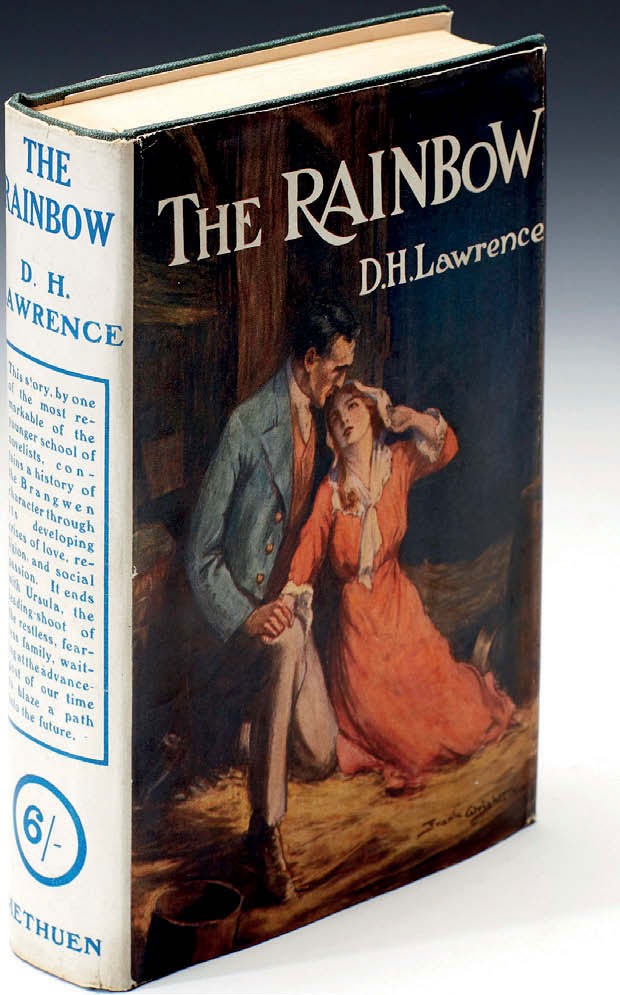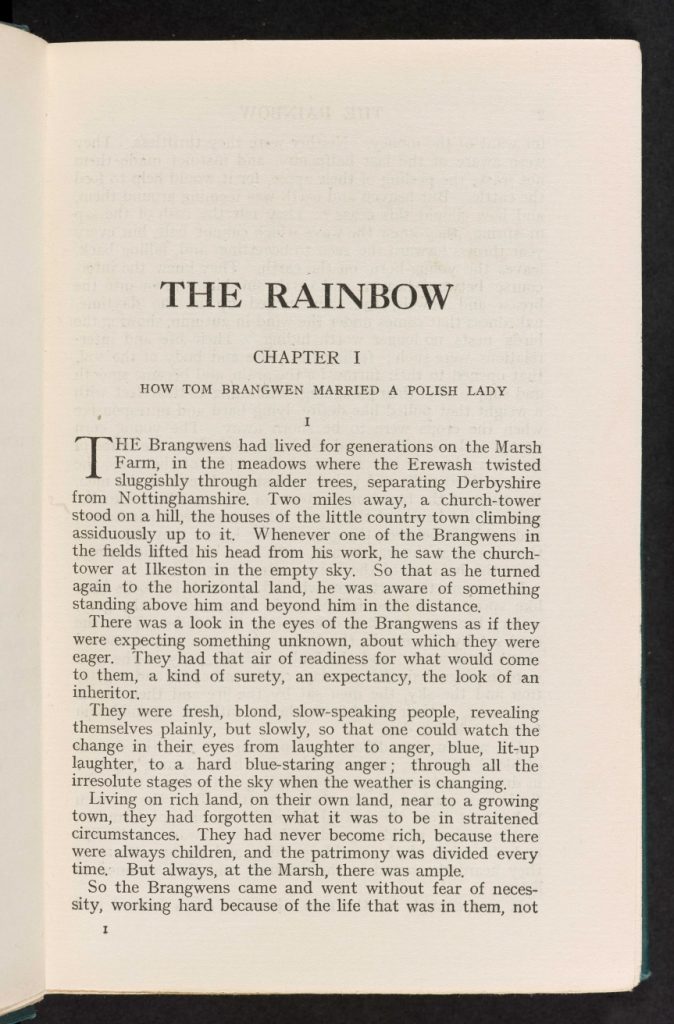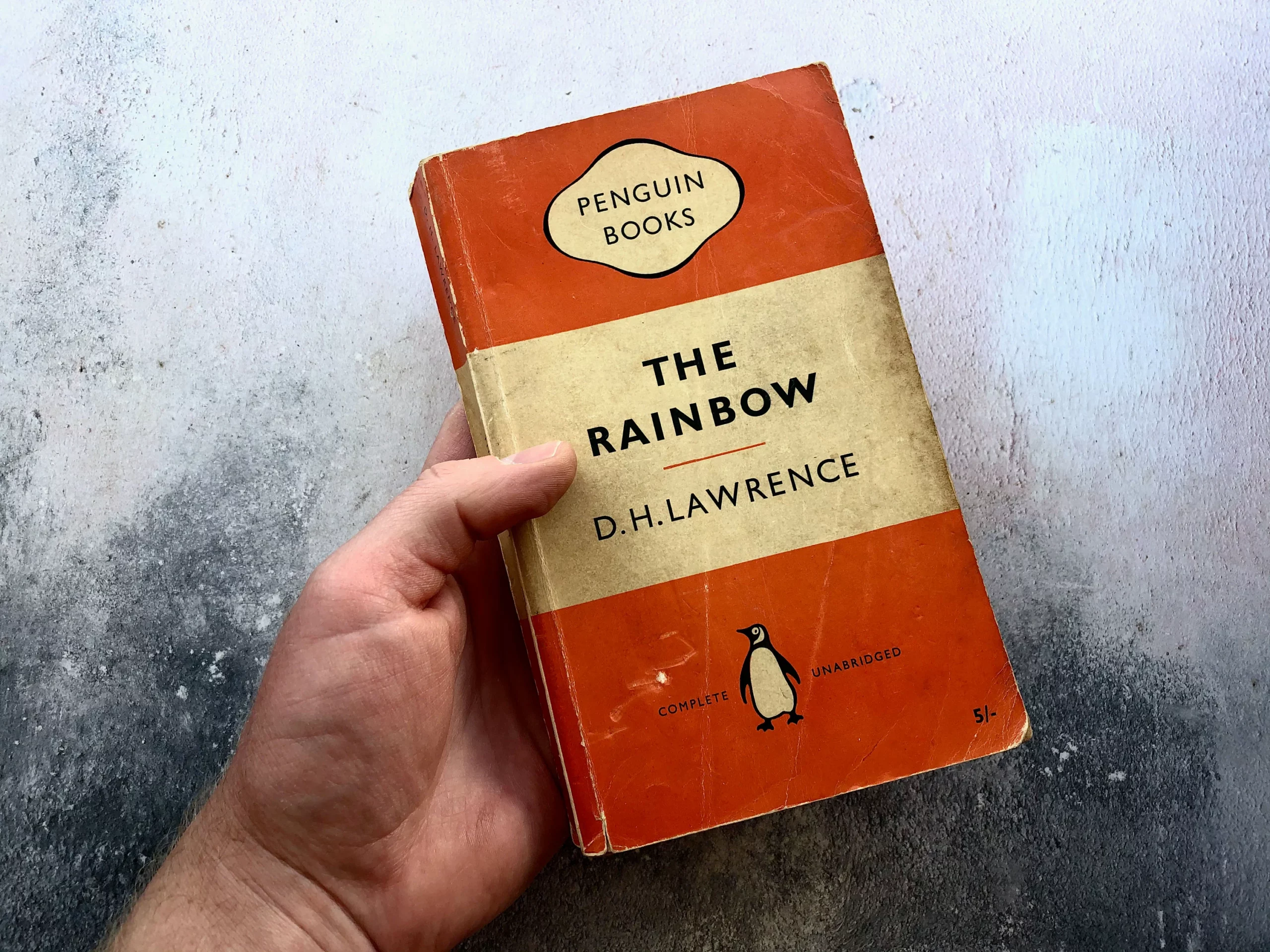The Rainbow by English writer and poet D.H Lawrence is a piece of modern fiction that explores the story of three generations of the Brangwen family, charting the growth of each character, particularly of the three women: Lydia, Anna, and Ursula. Like most of Lawrence’s novels, The Rainbow was considered to be obscene because of its frank description of sexuality, more so female sexuality and homosexuality, and as a result, was banned in England. Thousands of copies were withdrawn from publishers and printers to be burnt. The critical reception of the given book varies from one critic to another and one age to another.
The novel centres on the Brangwen family, who lives in the midlands of England, and deals with a diverse range of themes from marriage and sexuality, to the conflict between the individual and the society. It also subtly comments upon the education system and colonialism. The story is neither ordinary nor extraordinary, but is told in such a way that underlines the layers in the ordinary.
Even while dealing with common experiences like childhood, adolescence, courtship, love and family, Lawrence manages to maintain high dramatic tension and emotional turmoil. Written under the backdrop of the industrial revolution, The Rainbow sketches the English social fabric as the English society dealt with the changes that came with the revolution.

Above all, the most prominent idea that The Rainbow brings to light is that of discontentment and self-realisation. Human expectations, being endless, eventually lead to disappointment. The characters struggle to make peace with the outer world and constantly pine for something other than they have.
Tom Brangwen’s life is filled with an air of dissatisfaction and he seeks to marry Lydia, a Polish widow, in the hope that she would fill his life with contentment. Through the trope of complacency, Lawrence tries to bring home ideas of self-realisation and fulfilment. While his characters keep searching for something outside themselves, they’re actually seeking inner fulfilment.
In the third cycle, we find Ursula, who is quite determined to find and maintain a separate entity in herself. She frequently grapples with questions like, “How to act…whither to go, how to become oneself?” Ursula pursues a romantic relationship with Skrebensky as a method of breaking the patriarchal gender stereotype of fulfilment around the figure of motherhood to which her mother Anna adheres. Ursula’s socially unacceptable relationship blooms within their unconventional world of revolutionary passion and anarchy
“For Lawrence, to be truly fulfilled as a person is to be united…”, but F.R. Leavis points to a discrepancy in this idea as Lawrence also seems to suggest that this “uniting” can only be achieved between two individuals who are capable of recognising their own separateness and taking responsibility for it.
The idea of “union” brings us to another prime theme of the novel: marriage. As Lawrence’s characters search for a sense of completeness outside of themselves, they find it hard to connect with themselves and consequently, with their partners. Consequentially, the marriages we see in the novel are more or less flawed.
Tom and Lydia both are irresistibly attracted to the “foreignness” of the other, but until their inner self remains lacking, they find it impossible to connect with each other despite the random outbursts of sexual passion. Furthermore, their inability to communicate heightens the sense of aloofness in their marriage. Only when they feel a sense of fullness within themselves, are they able to surrender to one another completely – “Their coming together now…was much more wonderful than it had been before.”
Also read: Book Review: Lady Chatterley’s Lover By D.H Lawrence
Will and Anna appear to be truly in love with each other when they decide to get married, but both have little experience of romance. They, too, are drawn in by the strangeness of each other but instead of giving themselves to one another, they remain separate. They keep trying to seek entirety in each other, before seeking it within themselves.
Eventually, they struggle to be together in the face of reality. They spend the first few weeks of their marriage in their own bubble and come unstuck once they try to get out of it. Will, especially, has a hard time living up to his responsibilities and feels threatened by Anna’s individuality, which he sees as “indifference”. Due to his own lack of complacency, he gets insecure when he sees Anna as a complete being, outside of himself. This situation aggravates when they have children, and as a result, they drift further apart both from themselves and from each other.
In the third cycle, we find Ursula, who is quite determined to find and maintain a separate entity in herself. She frequently grapples with questions like, “How to act…whither to go, how to become oneself?” Ursula pursues a romantic relationship with Skrebensky as a method of breaking the patriarchal gender stereotype of fulfilment around the figure of motherhood to which her mother Anna adheres. Ursula’s socially unacceptable relationship blooms within their unconventional world of revolutionary passion and anarchy.
Ursula’s miscarriage, leading to her eventual sight of the rainbow demonstrates her success in discovering her individual identity by breaking gender and sexual stereotypes, rather than conforming to motherhood tropes or pursuing civic emancipation as recommended by the suffragette movement.

The sexual relations between different characters serve a significant purpose in the novel, revealing at times their inner turmoil, curiosity, and much more. By and by, The Rainbow delves deep into the psychological depths of its characters, explores the idea of ‘the new woman‘, and draws the reader into its world. Lawrence certainly undertook an arduous task with The Rainbow, touching upon a range of topics with great precision, maintaining artistic integrity all the while
When Ursula discovers such a universe and its potential, Lawrence portrays her as sexually overpowering Skrebensky for her pursuit of discovering the strength of her own feminine identity. Ursula’s unorthodox identity, including both her sexual and spiritual independence, exemplifies that by using female sexuality against men like Skrebensky, rather than having to conform to both oppressive and subservient gender norms like Lydia. Ursula becomes responsible for her own liberty and fulfilment.
Furthermore, Lawrence’s peculiar characterisation serves to widen the range of ideas in the novel. Through Skrebensky, for example, he manages to critique the masculinist culture that gave way to the Great War in the name of loyalty to “the nation”. Through Winifred, Lawrence tries to defy heteronormativity, and tries to explore alternative sexualities.
Lawrence ends The Rainbow with an extraordinary passage which has been a point of debate for critics ever since the novel came out. While many critics opined that the ending is unsatisfactory, there have been suggestions about the novel having an “anti-conclusion”. Ursula’s terrifying encounter with the wild horses and the sight of the rainbow, somehow lead her to the answer she had been searching.
The Rainbow, hence, can be viewed simply as a door for Ursula to step through. These visions seem to bring about an inner revolution, and provide her with other paths to walk upon. Thereby, the ending does not feel like an end, but rather a new beginning.

The frank description of sexuality in The Rainbow irked much of the people at the time of its release and it was vigorously accused of obscenity. But once viewed critically, sex comes across more as a symbol, something above and beyond eroticism. It can represent a range of meanings from transcendence to degradation to exploration.
The sexual relations between different characters serve a significant purpose in the novel, revealing at times their inner turmoil, curiosity, and much more. By and by, The Rainbow delves deep into the psychological depths of its characters, explores the idea of ‘the new woman‘, and draws the reader into its world. Lawrence certainly undertook an arduous task with The Rainbow, touching upon a range of topics with great precision, maintaining artistic integrity all the while.
Also read: Are Marriages Made In Heaven?: An Analysis Of Henrik Ibsen’s Iconic Play ‘A Doll’s House’
References:
Dougherty, Adelyn. “The Concept of Person in D. H. Lawrence’s THE RAINBOW.” Newsletter of the Conference on Christianity and Literature, vol. 21, no. 3, Sage Publications, Ltd., 1972, pp. 15–22
Brown, Homer O. “’THE PASSIONATE STRUGGLE INTO CONSCIOUS BEING’: D. H. LAWRENCE’S ‘THE RAINBOW.’” The D.H. Lawrence Review, vol. 7, no. 3, D.H. Lawrence Review, 1974, pp. 275–90
Wexler, Joyce Piell. “Sex Isn’t Everything (But It Can Be Anything): The Symbolic Function of Extremity in Modernism.” College Literature, vol. 31, no. 2, Johns Hopkins University Press, 2004, pp. 164–83
Stewart, Jack F. “Expressionism in ‘The Rainbow.’” NOVEL: A Forum on Fiction, vol. 13, no. 3, Duke University Press, 1980, pp. 296–315
Oliboni, Mario. The Search for Fulfilment in D. H. Lawrence’s ‘Sons And Lovers’ And ‘The Rainbow‘
Featured Image: Etsy
About the author(s)
Apoorva is currently pursuing her Master’s in English from Jamia Millia Islamia, New Delhi. When she’s not re-reading the letters by Virginia Woolf, she likes to try her hand at scribbling poetry. Her areas of interest revolve around Feminist Theory and Absurdist Fiction. She can be found brewing tea at midnight, complaining about our Sisyphean existence





Thanks for this great reader digest. Due to recent technological advances in AI robotics, women now have even more options when it comes to relationships – dating a realistic love doll is now a reality.
Thanks for this great reader’s digest. With the recent advancement in artitificial intelligence and robotics, women now have even more options when it comes to relationship and intimacy – dating a realistic love doll is now a reality!